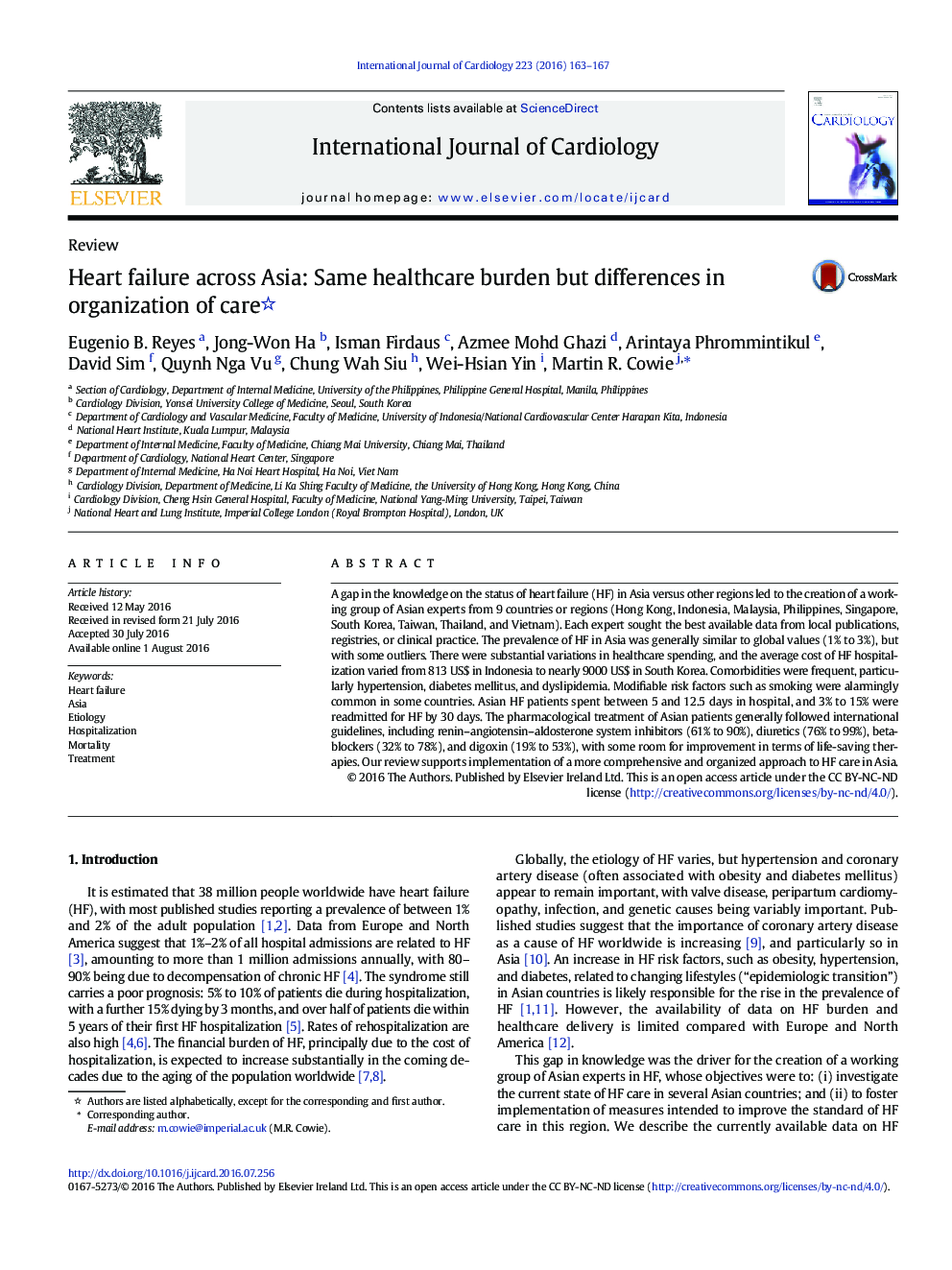| Article ID | Journal | Published Year | Pages | File Type |
|---|---|---|---|---|
| 5963068 | International Journal of Cardiology | 2016 | 5 Pages |
â¢The availability of data on heart failure (HF) burden in Asia is limited.â¢The most recent data on HF was collected by 9 Asian experts.â¢Prevalence and causes of HF, risk factors, outcomes, and treatments are provided.â¢HF is a major healthcare problem in Asia.â¢Prescription of recommended therapies should be optimized to improve outcomes.
A gap in the knowledge on the status of heart failure (HF) in Asia versus other regions led to the creation of a working group of Asian experts from 9 countries or regions (Hong Kong, Indonesia, Malaysia, Philippines, Singapore, South Korea, Taiwan, Thailand, and Vietnam). Each expert sought the best available data from local publications, registries, or clinical practice. The prevalence of HF in Asia was generally similar to global values (1% to 3%), but with some outliers. There were substantial variations in healthcare spending, and the average cost of HF hospitalization varied from 813 US$ in Indonesia to nearly 9000 US$ in South Korea. Comorbidities were frequent, particularly hypertension, diabetes mellitus, and dyslipidemia. Modifiable risk factors such as smoking were alarmingly common in some countries. Asian HF patients spent between 5 and 12.5Â days in hospital, and 3% to 15% were readmitted for HF by 30Â days. The pharmacological treatment of Asian patients generally followed international guidelines, including renin-angiotensin-aldosterone system inhibitors (61% to 90%), diuretics (76% to 99%), beta-blockers (32% to 78%), and digoxin (19% to 53%), with some room for improvement in terms of life-saving therapies. Our review supports implementation of a more comprehensive and organized approach to HF care in Asia.
